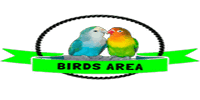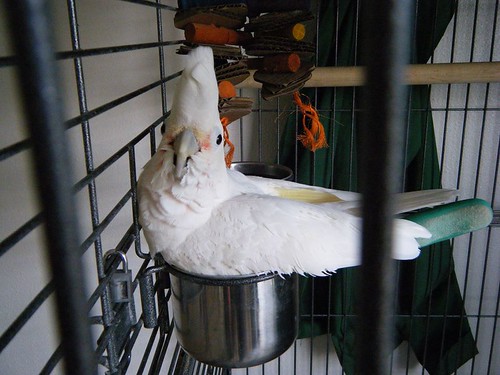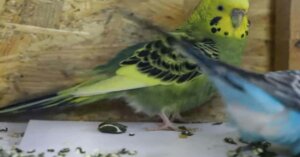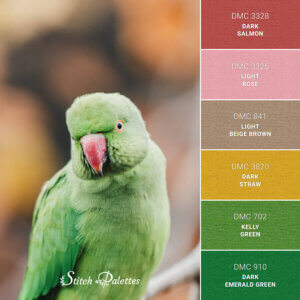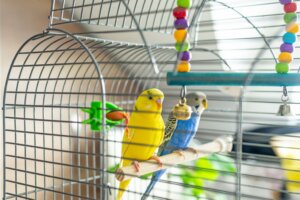How Pet Birds Build Their Nests: Fascinating Techniques Revealed
Ever wondered how pet birds create their nests? Birds use their instincts and skills to build safe homes.
Pet birds, like their wild counterparts, have an innate talent for nest building. They select materials, find a cozy spot, and start construction. This fascinating process showcases their intelligence and creativity. Understanding how pet birds build their nests can help bird owners provide better care and environments for their feathered friends.
Nest building is more than just placing twigs together; it’s a complex behavior driven by instinct and necessity. Let’s dive into the intricate world of avian architecture and explore how these tiny engineers create their safe havens.
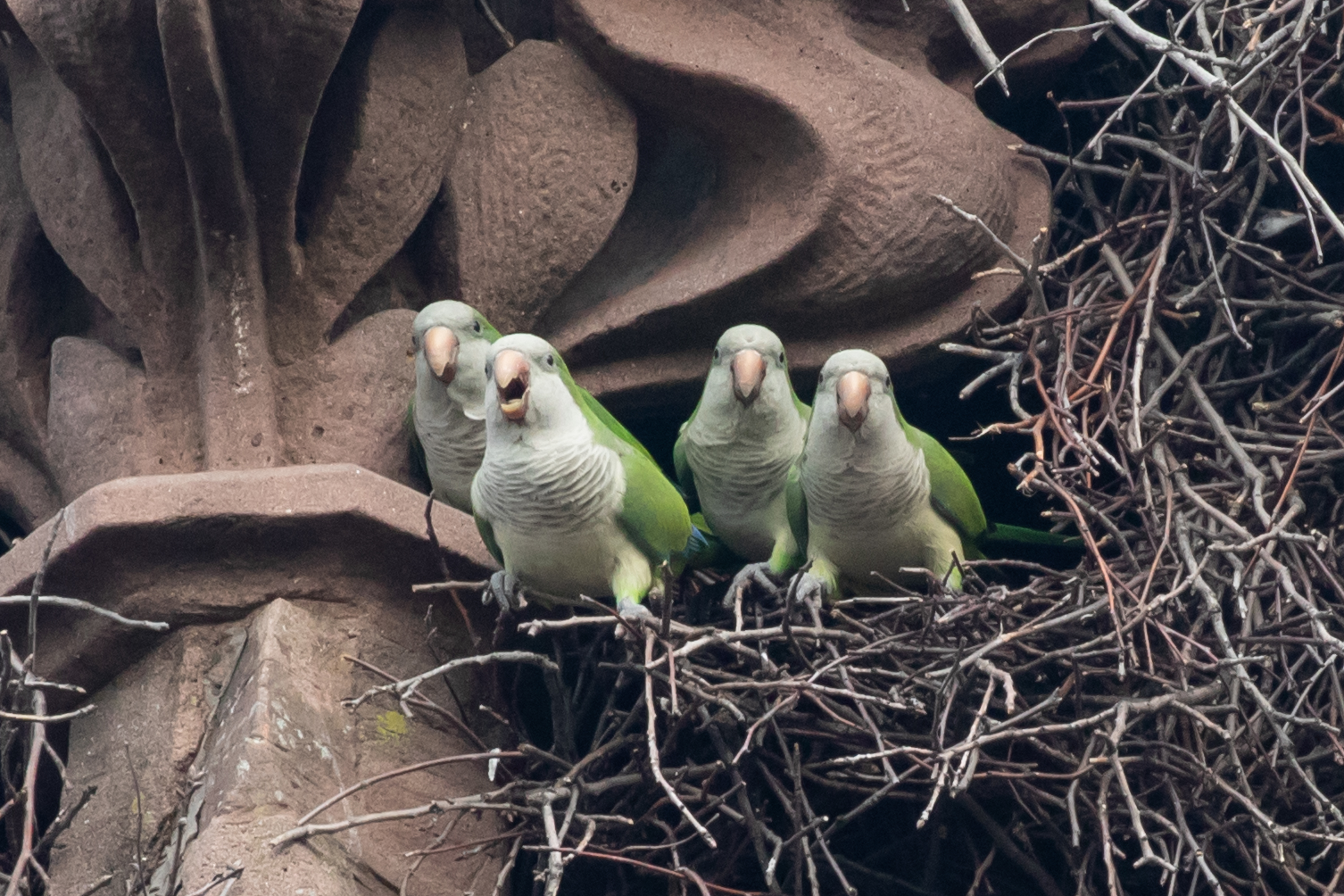
Credit: nycbirdalliance.org
Introduction To Bird Nesting
Birds are fascinating creatures with unique ways of living. One of the most interesting aspects of their lives is how they build their nests. Each bird species has its own method. Some birds create simple nests, while others build complex structures. Let’s explore the world of bird nesting.
Importance Of Nests
Nests are more than just homes for birds. They provide shelter and protection for their eggs and chicks. A well-built nest keeps predators away and offers a safe place for young birds to grow. Without nests, many bird species would struggle to survive.
Variety Of Nesting Habits
Different birds have different nesting habits. Some birds, like doves, build simple nests with twigs and leaves. Others, such as weaver birds, create elaborate nests that hang from trees.
Here are some common nesting habits:
- Ground Nests: Birds like plovers make nests on the ground.
- Tree Nests: Many birds, like robins, build nests in trees.
- Cavity Nests: Woodpeckers create nests in tree holes.
| Bird Type | Nesting Habit |
|---|---|
| Plover | Ground Nests |
| Robin | Tree Nests |
| Woodpecker | Cavity Nests |
Each bird species adapts its nesting habits to its environment. This ensures the safety and survival of its young.
Materials Used By Pet Birds
Pet birds are resourceful builders. They use various materials to create their nests. Some materials are natural, while others come from their human companions.
Natural Materials
Many pet birds prefer natural materials for nest building. These materials mimic what they would find in the wild. Common natural materials include:
- Twigs: Birds use small branches to create a sturdy base.
- Grass: Soft grass makes the nest comfortable.
- Leaves: Leaves provide insulation and camouflage.
- Feathers: Birds often use their own feathers for lining.
Human-supplied Materials
Human-supplied materials can also be useful for pet birds. They add variety and ease to nest building. Some helpful materials include:
- Paper strips: Shredded paper is soft and easy to shape.
- Yarn: Small pieces of yarn add color and texture.
- Cotton: Cotton balls or strips offer warmth and comfort.
- Cloth scraps: Small pieces of fabric provide a cozy lining.
Bird owners can help by providing these materials. This makes the nest-building process easier and more enjoyable for their pets.
Nest Building Techniques
Birds have fascinating ways to build their nests. Each species has its unique techniques. These techniques ensure the safety and comfort of their eggs and chicks. Let’s explore some of these amazing nest-building techniques.
Weaving And Knotting
Some birds use weaving and knotting techniques. They gather materials like grass, twigs, and leaves. These birds skillfully weave these materials together. This creates a secure and sturdy nest. Weaver birds are experts at this. Their nests often resemble intricate baskets. The weaving process makes the nest strong and durable.
Mud And Saliva
Other birds use mud and saliva to build their nests. They collect mud from riverbanks or ponds. They mix it with their saliva to make it sticky. Swallows and swifts are known for this technique. They create small, cup-shaped nests. These nests stick firmly to walls or cliffs. The combination of mud and saliva makes the nest strong.
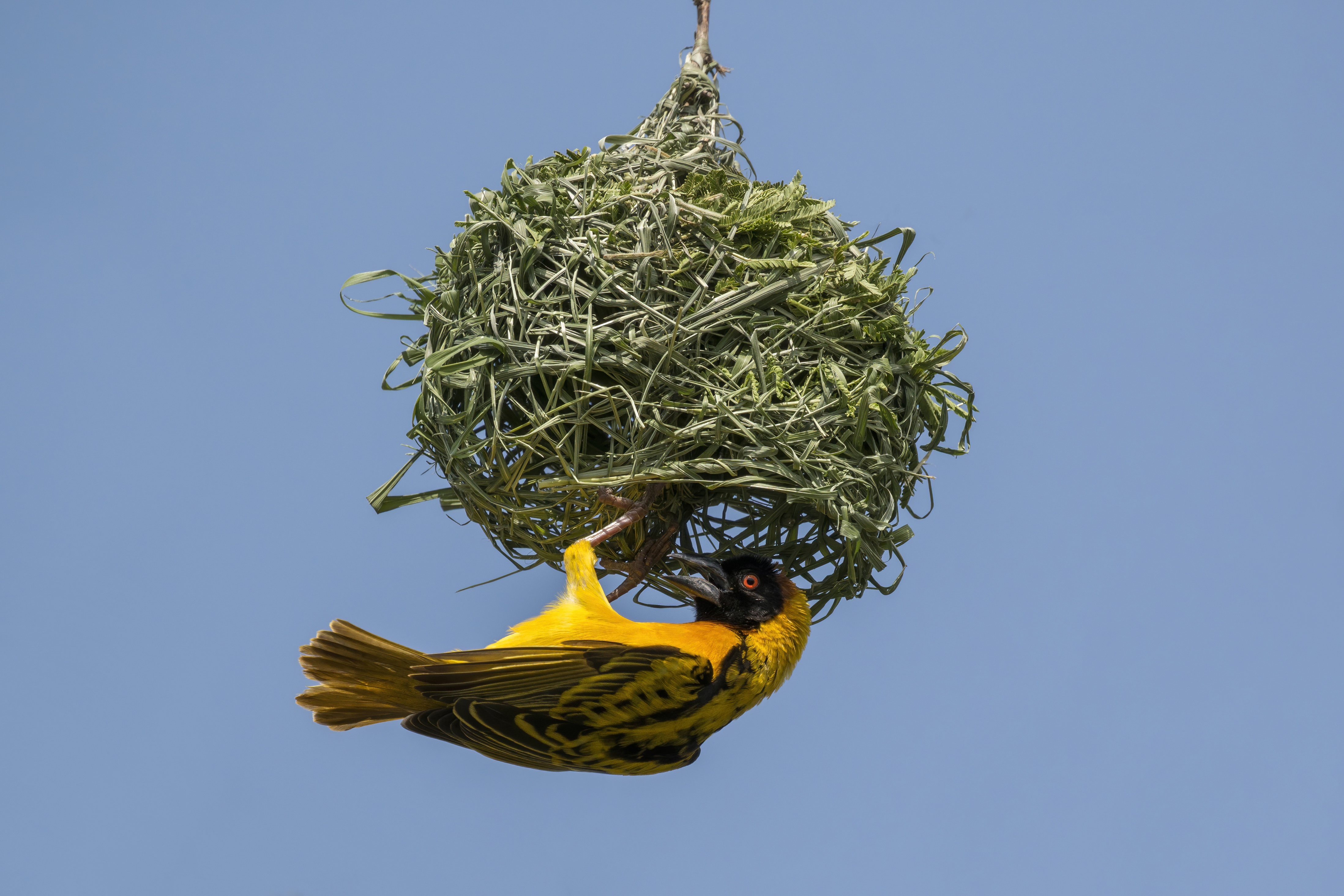
Credit: en.wikipedia.org
Species-specific Nesting Behaviors
Understanding how pet birds build their nests can be fascinating. Each species has its own unique way of creating a home. In this section, we will explore the nesting behaviors of different bird species. Let’s dive into the world of parrots, parakeets, finches, and canaries.
Parrots And Parakeets
Parrots and parakeets have interesting nesting habits. Parrots often use tree cavities as nests. They prefer high, safe spots away from predators. Parakeets, also known as budgerigars, are a bit different. They like to nest in tree holes. In captivity, they use nest boxes. These boxes mimic natural tree cavities. Parrots and parakeets line their nests with leaves and feathers for comfort.
Finches And Canaries
Finches and canaries have a different nesting style. Finches build cup-shaped nests. They use grass, twigs, and feathers. These materials make the nest soft and warm. Canaries, on the other hand, prefer open cup nests. They use similar materials but add moss for extra comfort. Both species work hard to make a safe place for their eggs. They choose spots that are hidden from predators.
Role Of Environment
The environment plays a crucial role in how pet birds build their nests. Birds adapt to their surroundings and use available resources. Understanding these factors helps us create better habitats for our feathered friends.
Indoor Vs. Outdoor Settings
Indoor birds often use household items for their nests. They may pick up small pieces of cloth, paper, or string. These materials are soft and easy to handle. Indoor settings usually provide a safer environment. There are fewer predators and harsh weather conditions.
Outdoor birds have different challenges. They use natural materials like twigs, leaves, and grass. Outdoor settings expose birds to predators and the elements. This makes nest building more complex and risky. Birds must find safe spots to build their nests.
Climate And Weather Influence
Climate and weather greatly impact nest building. In warmer climates, birds build nests that allow airflow. This keeps the nest cool and comfortable. Birds in colder areas build tighter nests. These help to retain heat and protect against the cold.
Weather conditions also play a role. During rainy seasons, birds choose locations that stay dry. High winds make birds select sheltered spots. Understanding these factors helps us support our pet birds’ nesting needs.
Nest Location Preferences
Pet birds are fascinating creatures, especially when it comes to building nests. Their choice of location reflects their instinct for safety and convenience. Different species have unique preferences, but there are common factors that influence their decisions.
Height And Safety
Many pet birds prefer building nests at a certain height. This makes them feel secure from predators. High locations give them a good vantage point. They can see potential threats and protect their young. It also keeps the nest away from disturbances.
Accessibility And Convenience
Birds also consider accessibility. The nest should be easy to reach for them. Yet, it should be hard for predators to access. Convenience is key. Birds look for places where they can easily bring food. They need to ensure the safety of their eggs and chicks.
Challenges Faced By Pet Birds
Pet birds face several challenges when building their nests. These obstacles can impact their ability to create safe and comfortable homes. Understanding these challenges can help bird owners provide better care and support. Let’s explore some of the common issues pet birds encounter.
Predators And Safety
Safety is a major concern for pet birds. Even indoor birds can face threats from predators. Cats, dogs, and other pets may pose risks. Birds need a secure space to build their nests without feeling threatened.
Bird owners can help by creating safe spaces. Use cages with secure locks. Place the cages in areas where other pets cannot reach. This ensures that birds feel safe while nesting.
Space Constraints
Space is another critical factor. Pet birds need enough room to build their nests. Small cages can limit their ability to create comfortable homes. Birds need space to gather materials and construct their nests properly.
Providing larger cages or aviaries can help. Ensure there is enough space for the bird to move around. This supports their natural nesting behaviors. Larger spaces also reduce stress and promote well-being.
Consider adding nesting materials in the cage. Twigs, leaves, and soft fabrics can be used. These materials make it easier for birds to build their nests. It also mimics their natural environment, making them feel more at home.

Credit: www.dl-online.com
Supporting Pet Birds In Nest Building
Supporting pet birds in nest building can be a rewarding experience. This process helps pet birds feel secure and comfortable. It’s important to provide the right materials and create a safe environment.
Providing Materials
Birds need specific materials to build nests. Offer a variety of options. Common choices include twigs, straw, and soft fibers. You can also use shredded paper or cotton. Avoid synthetic materials that could harm them. Place these materials in easy-to-reach areas. This encourages natural behavior and reduces stress.
Creating A Safe Environment
A safe environment is crucial for nest building. Choose a quiet, secluded spot. This area should be free from predators and loud noises. Ensure the space is clean and free from harmful substances. Maintain a stable temperature to keep your birds comfortable. Providing a safe and calm space helps your birds build nests successfully.
Frequently Asked Questions
How Do Pet Birds Build Their Nests?
Pet birds use various materials like twigs, leaves, and feathers to build nests. They often choose a safe, hidden spot. Nest building is instinctive and helps protect their eggs and chicks.
What Materials Do Pet Birds Use?
Pet birds use twigs, leaves, feathers, and even paper for nest building. They gather these materials from their environment. This behavior is natural and helps them create a comfortable space for their eggs.
Why Do Birds Build Nests?
Birds build nests to protect their eggs and chicks. Nests provide safety from predators and harsh weather. It’s an instinctive behavior crucial for their survival and reproduction.
Where Do Pet Birds Prefer To Build Nests?
Pet birds prefer quiet, safe, and hidden spots for nest building. They often choose corners or elevated areas. This helps protect their eggs and chicks from potential threats.
Conclusion
Pet birds are fascinating nest builders. Their methods vary by species. Some weave intricate designs. Others use mud, leaves, or twigs. Observing their work can teach us about nature. Each nest tells a story of survival and care. Understanding these behaviors helps appreciate our feathered friends.
So next time you see a bird, think of its nest. Notice the details. And enjoy the beauty of nature’s architects.
Hello Dear, I'm Poli Kolymnia, owner of many birds (including budgies).
With a deep passion for these feathered companions, I'm here to share my expertise and extensive knowledge on birds care.
My articles cover essential topics like diet, housing, care, and health, providing practical tips to help you create a happy and thriving environment for your birds.
